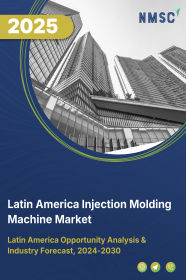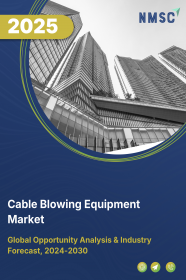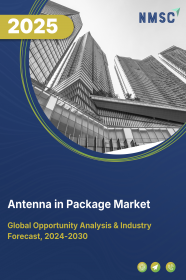
Latin America Injection Molding Machine Market by Product Type (Plastic, Rubber, Metal, Ceramic, and Others), by Machine Type (Hydraulic, All-electric, and Hybrid), by Clamping Force (Below 200 Tons, 200–500 Tons, and Above 500 Tons), by Business Type (New Sales and Aftersales), by End-User (Automotive, Packaging, Electronics, Healthcare, Consumer Goods, Toy Making, Building and Construction, Home Appliances, and Others) –Opportunity Analysis and Industry Forecast, 2024–2030
Industry: Semiconductor & Electronics | Publish Date: 23-Apr-2025 | No of Pages: 203 | No. of Tables: 142 | No. of Figures: 107 | Format: PDF | Report Code : SE1498
US Tariff Impact on Latin America Injection Molding Machine Market
Trump Tariffs Are Reshaping Global Business
Market Definition
Latin America Injection Molding Machine Market size was valued at USD 455.07 million in 2023, and is predicted to reach USD 658.99 million by 2030, with a CAGR of 5.1% from 2024 to 2030. An injection molding machine, also referred to as an injection molder, is a sophisticated industrial apparatus designed for the precise and controlled injection of molten plastic material into a mold cavity. It melts the plastic resin and forces it into a mold under high pressure. Injection molding machines are essential tools for producing various plastic parts and products across various sectors, including automotive, consumer goods, electronics, medical devices, and others.
Brazil Boosts Injection Molding Industry with Local Production
Brazil's focus on local production and economic self-sufficiency is a vital factor driving the injection molding machines industry. Policies aimed at encouraging domestic manufacturing, fostering innovation, and attracting foreign investment are contributing to an environment conducive to growth. These initiatives propels the manufacturing ecosystem, creating a demand for advanced machinery such as injection molding machines.
For instance, in May 2023, The Brazilian government revealed a series of incentives to boost local industry and expand the economy. As part of the initiatives, development bank BNDES announced a reduction of up to 60% in the spread of the Exim Pré-Embarque credit line, which finances the production of goods for export. These factors collectively position Brazil as a significant player in the injection molding machines industry, advancing, innovation, and economic development within the country.
Increasing Trend towards Customization Boosts Injection Molding Machine Market Expansion
The increasing demand for customized products across different industries is changing what consumers want and pushing manufacturers to adjust how they make things. This shift towards customization means that companies need injection molding machines that are flexible and adaptable to different designs and production needs. Injection molding allows manufacturers to create detailed and one-of-a-kind products with accuracy and reliability, meeting the changing expectations of consumers. As companies work to stand out in a crowded market, the versatility of injection molding lets them quickly adapt to new trends and customer desires, driving growth in the market overall.
Emergence of Alternative Manufacturing Technologies Hinders the Market Growth
Emergence of alternative manufacturing technologies, such as 3D printing and additive manufacturing also restrains growth of the injection molding machines market. These innovative methods offer unique advantages that are drawing attention away from conventional injection molding. Industries that prioritize customization, rapid prototyping, and waste reduction are increasingly turning to 3D printing and additive manufacturing.
This diversion of demand impacts the injection molding machines market, particularly in sectors where these alternatives better suit the production requirements. As a result, injection molding machine manufacturers face the challenge of adapting to changing market dynamics and finding ways to remain competitive, as manufacturing technologies continue to evolve.
Customized Products from Diverse Industries Offer a Prime Opportunity for Growth and Innovation
A significant factor expected to create substantial market opportunities for injection molding machines in the future is rise in demand for customization and personalized products. This trend is becoming evident across various industries, ranging from consumer goods to electronics. Injection molding machines are at the forefront of catering to this trend.
Machines that possess the ability to quickly switch between different molds and efficiently produce small batches play a pivotal role in enabling manufacturers to respond to this demand for customization. These machines empower manufacturers to produce items that are tailor-made to suit specific requirements and preferences. Whether it's creating custom-designed consumer goods or producing electronics with unique features, injection molding machines equipped for such versatility are crucial for fulfilling consumers’ demand.
Competitive Landscape
The Latin America injection molding machine industry includes several market players such as Hillenbrand, Inc., Sumitomo Heavy Industries, The Japan Steel Works, NISSEI, Ube Industries, Ltd., ENGEL, ARBURG, Haitian International, Husky Injection Molding Systems, and KraussMaffei Group.
The Latin America Injection Molding Machine Market Key Segments
By Product Type
-
Plastic
-
Thermoplastics
-
Thermosets
-
-
Rubber
-
Metal
-
Powder
-
Liquid
-
-
Ceramic
-
Others
By Machine Type
-
Hydraulic
-
All-electric
-
Hybrid
By Clamping Force
-
Below 200 Tons
-
200–500 Tons
-
Above 500 Tons
By Business Type
-
New Sales
-
Aftersales
By End-User
-
Automotive
-
Interior
-
Trim
-
Exterior
-
Others
-
-
Packaging
-
Caps and Closures
-
Thin-wall Containers
-
Lids
-
Personal Care
-
Containers
-
PET Preforms
-
Others
-
-
Electronics
-
Healthcare
-
Consumer Goods
-
Toy Making
-
Building and Construction
-
Flooring
-
Windows
-
Doors
-
Others
-
-
Home Appliances
-
Others
By Region
-
Latin America
-
Brazil
-
Mexico
-
Argentina
-
Colombia
-
Chile
-
Peru
-
Other Countries
-
Key Players
-
Hillenbrand, Inc.
-
Sumitomo Heavy Industries
-
The Japan Steel Works
-
NISSEI
-
Ube Industries, Ltd.
-
ENGEL
-
ARBURG
-
Haitian International
-
Husky Injection Molding Systems
-
KraussMaffei Group
REPORT SCOPE AND SEGMENTATION:
|
Parameters |
Details |
|
Market Size in 2023 |
USD 455.07 Million |
|
Revenue Forecast in 2030 |
USD 658.99 Million |
|
Growth Rate |
CAGR of 5.1% from 2024 to 2030 |
|
Analysis Period |
2023–2030 |
|
Base Year Considered |
2023 |
|
Forecast Period |
2024–2030 |
|
Market Size Estimation |
Million (USD) |
|
Growth Factors |
|
|
Companies Profiled |
10 |
|
Market Share |
Available for 10 companies |
|
Customization Scope |
Free customization (equivalent up to 80 working hours of analysts) after purchase. Addition or alteration to country, regional, and segment scope. |
|
Pricing and Purchase Options |
Avail customized purchase options to meet your exact research needs. |

















 Speak to Our Analyst
Speak to Our Analyst




















